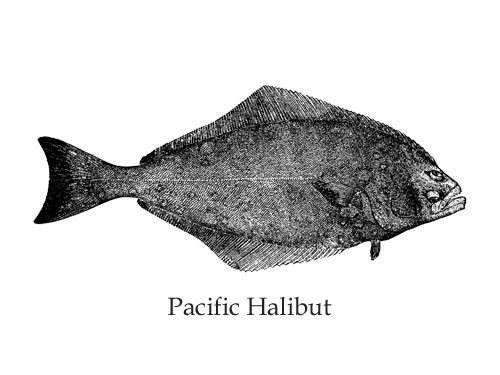
Pacific halibut (Hippoglossus stenolepis) is an important commercial species in the North Pacific Ocean. Their range extends from the Sea of Japan to Baja California. In the Northwest, Pacific halibut are most abundant from Oregon to Alaska, including the Bering Sea.
Reaching lengths of 8 feet or more and weighing up to 500 pounds, the Pacific halibut is the largest of North America’s flatfish. Females may live 40 years or more. Males are smaller and have shorter life spans. Adult fish are usually found in deeper waters off the coasts.
Pacific halibut prefer rocky bottoms where they feed on cod, pollock, herring, octopus, crabs, shrimp, and other prey.
Longlining is the primary commercial gear used to target halibut. In the Pacific region, Incidental catches occur in commercial salmon troll and sablefish fisheries.
In the northern part of their range, Pacific halibut are sometimes caught together with Greenland halibut, a close relative.
The International Pacific Halibut Commission (IPHC) oversees joint management of Pacific halibut stocks within the convention waters of Canada and the USA.
Each year, the IPHC sets the total allowable catch (TAC) for halibut that will be caught in U.S. and Canadian waters in the northeastern Pacific Ocean.
NOAA Fisheries establishes regulations for U.S. waters off the coasts of Washington, Oregon, and California. Resources are divided among tribal and non-tribal fisheries, commercial, and recreational fisheries.
The Alaska commercial longline fishery is managed under an Individual Fishery Quota (IFQ) system.
Related Information